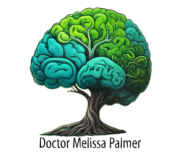How to Improve Memory: A Comprehensive Guide for All Ages Part 3 (Autumn 2024):Top Tips & The Best Proven Techniques to Boost Memory Retention
Top Tips & The Best Proven Techniques to Boost Memory Retention
I have been teaching for nearly 25 years and I use lots of different memory tricks and tips to help students remember all the science facts that are on the curriculum here in England. I have put some detail about different types of memory techiques in this blog. I am aiming to do a deeper dive on this closer to (mock) exam time in the UK at the end of the year.
• The power of mnemonic devices, acronyms, & visualization
My Very Easy Method Just Speeds Up Naming Planets (Mercury, Venus, Earth, Mars, Jupiter, Saturn, Uranus, Neptune – and the now downgraded from planet, to dwarf planet, to now a planetoid – Pluto). I use mnemonics to remember the order of a set of facts needs to be in. Another example is the hierachical classification system: Do Keep Ponds Clean Or Frogs Get Sick (Domain, Kingdom, Class, Order, Family, Genus, Species). If you are a student or you are helping a student – my best advice with mnemonics is to have fun with them. The sillier or the ruder the more they will stick and the easier you will find them to recall.
Acronyms are great for remembering all sorts of complex names or processes. When teaching GCSE Biology I use an an acronym to help the students remember the multi-step process of the reflex arc. SRS-SRS-EER (I also clap it out as a rhythm- it gets in the students heads this way). Stimulus, Receptor, Sensory Neurone, Synapse, Relay Neurone, Synapse, Effector Neurone, Effector, Response.
Visualisation works really well for some students. Imagining the process your food takes as it is being digested, or imagining a molecule of water as it goes through the water cycle. Using visualisation with a narrative means the brain is receiving the information through two pathways (see my earlier blog). This is a type of dual coding and has been proven to be a really effective way to learn.
• Spaced repetition: Maximizing learning efficiency
Spaced repitition – does what it says on the tin. Go over a set of facts you have learned and recite them or write them out. Then leave it a set amount of time (this amount of time varies between individuals in its’ efficacy – you will need to experiment). You could try a couple days, a week, a month. Then go over the facts again and recite them or write them out again. This practice is reinforcing the neural pathways in your brain for this/these memories. This will make the information easier to recall.
• Chunking: Breaking information into manageable pieces
“How do you eat an elephant?” I ask the students. “You can’t miss it’s too big!” they reply. Then one of the students will say cut it into pieces. When we are going to revise a whole subject it feels like we have been asked to eat an elephant. It is insurmountable – so we never start. You need to chunk up the learning into manageable bites. I say to students do 5 minutes a day or 10 minutes every other day of each subject. Start early and use active forms of learning. Exam Qs, revision cards (there are loads of online versions of these now), watch a YouTube Video for 5 mins then write out what you can remember.
If you are simply starting a huge academic challenge. A Masters, a PhD then chunk it up. I used the analogy of walking up a mountain when I did my PhD. I worked on it every day for at least 20 minutes. Every step I took however small, I celebrated. Sometimes I fell down the moutain a bit, but the next time I took the path up it was a little easier as I had learned from my mistakes.
• Active recall: Testing yourself for better retention
Testing yourself is fantastic for learning information. There are many ways to do this for example using Apps, tests, revision workbooks or exam questions. The key is to be prepared to fail to do well. Research shows getting it wrong, actually helps you learn the facts quicker. The neural pathway for the correct answer is more reinforced than if you get the If you get the correct answer to start with. Once again do a little and often for the most effective results.
